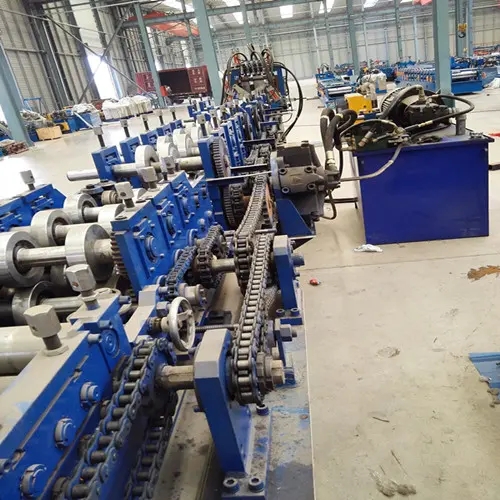
The Future of Manufacturing Automatic T Ceiling Production Line
In the world of manufacturing, the integration of advanced technology has revolutionized traditional processes, making them more efficient, cost-effective, and adaptable. One such innovation is the automatic T ceiling production line, which exemplifies how automation can streamline operations in the construction and interior design sectors.
What is a T Ceiling?
Before delving into the production line, it is essential to understand what a T ceiling is. A T ceiling, often referred to as a drop ceiling or suspended ceiling, consists of a grid system that supports ceiling tiles. This design not only enhances the aesthetic appeal of spaces but also provides functional benefits such as sound reduction, thermal insulation, and easy access to underlying infrastructure like electrical wiring and plumbing.
The Need for Automation
Traditionally, the production of T ceilings involved multiple manual processes that were time-consuming and labor-intensive. With the increasing demand for quick turnaround times and the pressure to maintain high standards of quality, manufacturers began seeking automated solutions. The automatic T ceiling production line emerged as a response to these market needs, addressing the challenges of efficiency, consistency, and scalability.
Components of an Automatic T Ceiling Production Line
An automatic T ceiling production line typically includes several key components
1. Raw Material Handling This phase involves the automated movement and storage of raw materials required for production, such as metal for the grid and various materials for ceiling tiles.
2. Cutting and Shaping Automated cutting machines accurately size the metal T bars and ceiling tiles based on predetermined specifications. This precision reduces material waste and ensures uniformity across products.
3. Assembly Line The integration of robotic arms in the assembly process enhances speed and accuracy. These robots handle the assembly of T grids and tiles with minimal human intervention, resulting in a streamlined workflow.

4. Quality Control Automated systems are equipped with sensors and cameras that monitor product quality in real-time. This technology detects inconsistencies or defects as they occur, allowing for immediate corrective action.
5. Packaging Once the T ceilings are produced, they are automatically packaged using machines that wrap and label them for distribution. This not only saves time but also ensures that products are delivered in perfect condition.
Advantages of Automation in T Ceiling Production
The benefits of implementing an automatic T ceiling production line are numerous
- Increased Efficiency Automation significantly speeds up the production process, allowing manufacturers to meet larger orders and reduce lead times.
- Cost Reduction While the initial investment in automated technology may be substantial, the long-term savings in labor costs, reduced material waste, and increased output often outweigh these expenses.
- Improved Quality Automated systems minimize human error, leading to higher quality products. Consistency in manufacturing also enhances brand reputation and customer satisfaction.
- Flexibility Advanced manufacturing systems can be easily reprogrammed to accommodate different product designs, enabling manufacturers to adapt to changing market demands without major disruptions.
- Enhanced Safety By minimizing human involvement in potentially hazardous processes, automation contributes to a safer work environment, reducing the risk of workplace injuries.
Conclusion
As industries continue to evolve, the significance of an automatic T ceiling production line cannot be overstated. This technological advancement not only transforms the manufacturing landscape but also paves the way for a more sustainable and efficient future in construction and interior design. By harnessing the power of automation, manufacturers can meet contemporary demands while preparing for the challenges of tomorrow, thus securing their place in an increasingly automated world. As we look ahead, the automatic T ceiling production line stands as a beacon of innovation, illustrating the potential that lies in combining technology with traditional manufacturing practices.